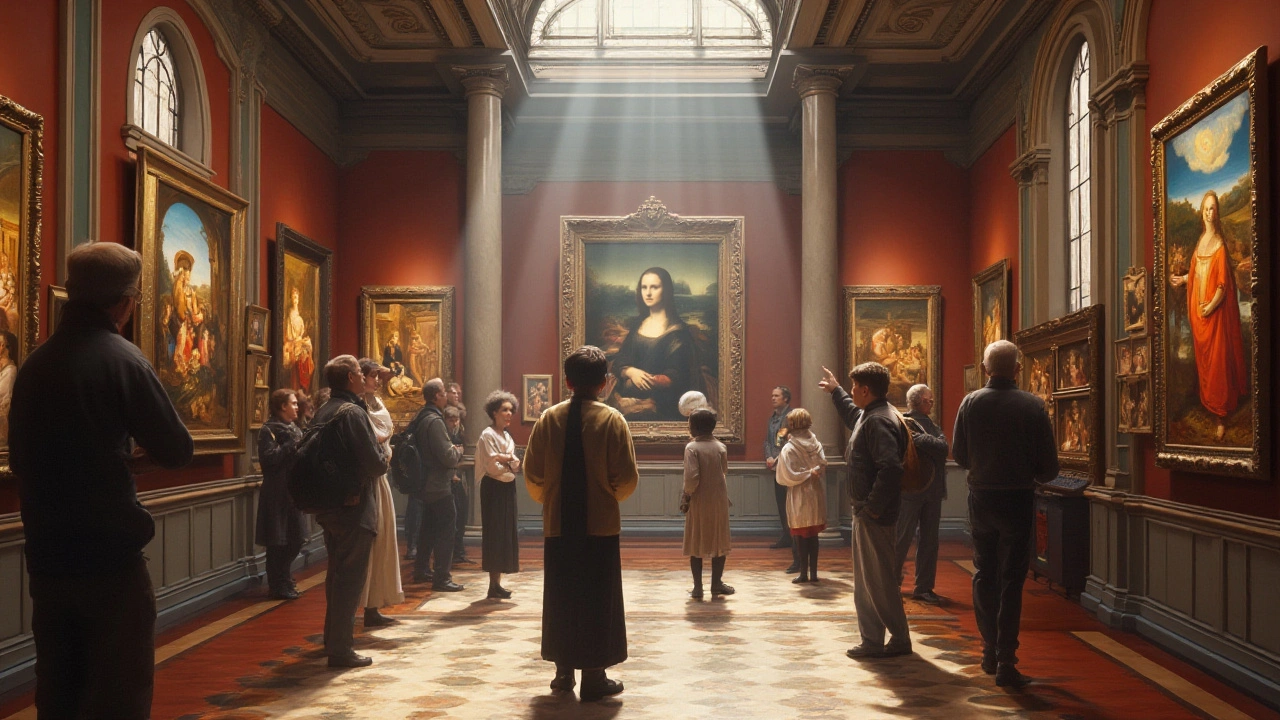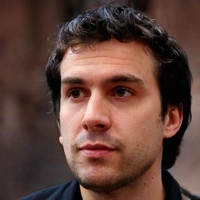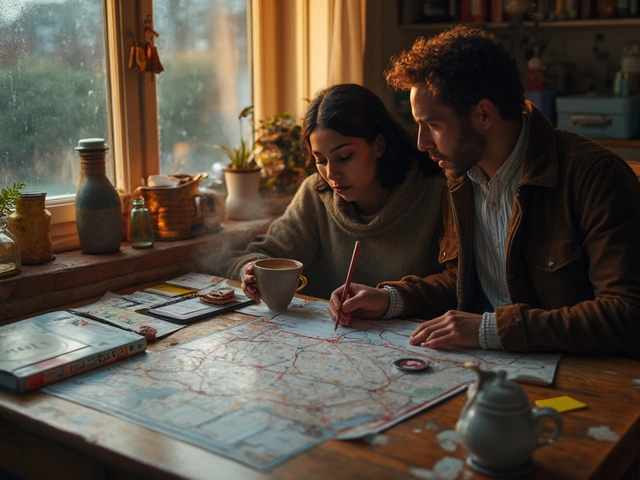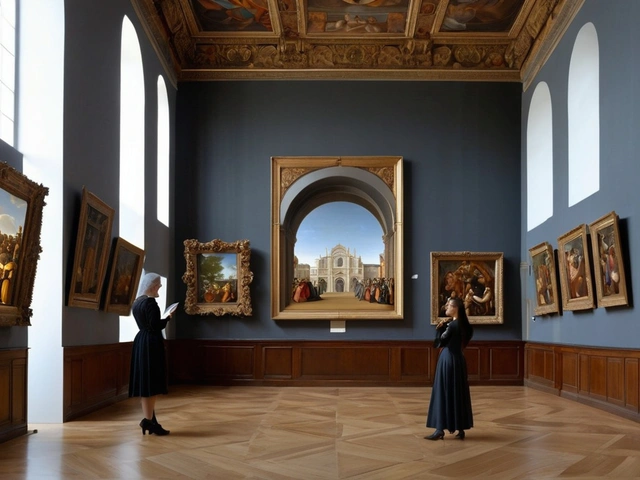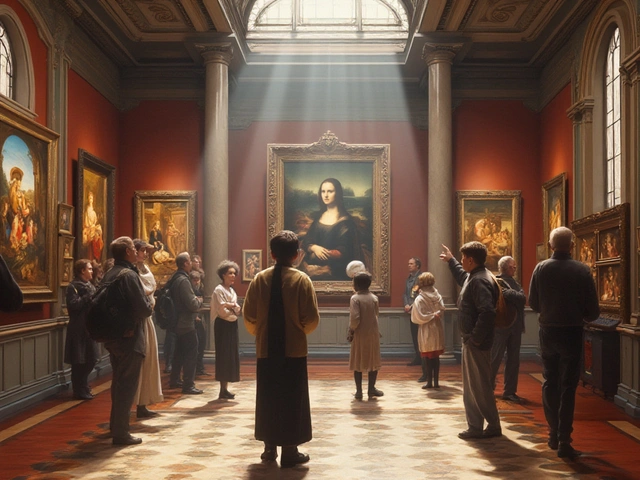Renaissance Art is often seen as the pinnacle of artistic achievement. This era, roughly spanning the 14th to 17th centuries, marked a profound evolution in art, culture, and thinking. Emerging from the Middle Ages, the Renaissance ignited a newfound passion for knowledge, exploration, and expression.
The period birthed not only stunning works of art but also introduced revolutionary techniques and perspectives that altered the course of art history. As you delve into this captivating time, you'll encounter names like Leonardo da Vinci, Michelangelo, and Raphael, artists whose contributions continue to leave a lasting impact.
Understanding the essence of Renaissance Art can enhance our appreciation for these historical treasures. From intricate frescoes adorning ancient churches to meticulous oil paintings capturing the human condition, each piece tells a story of discovery and innovation. Let's journey through the wondrous realm of Renaissance Art and uncover the secrets and stories hidden within these timeless masterpieces.
- The Birth of Renaissance Art
- Key Renaissance Artists and Their Contributions
- Techniques and Innovations
- Cultural Impact and Modern Relevance
The Birth of Renaissance Art
The Renaissance, which means 'rebirth,' was a period of radical cultural transformation that began in Italy in the late 14th century and spread throughout Europe. This era is often marked by its rediscovery and application of classical knowledge and ideas, specifically those from Greece and Rome. The intellectual movement known as humanism played a key role in this revival, focusing on the potential of human beings and the natural world rather than solely on religious matters.
The initial flowering of Renaissance Art can be traced to Florence, a city-state in present-day Italy. Florence was not only a political and economic hub but also a magnet for intellectual and artistic talents. The Medici family, notable patrons of the arts, provided the financial support and political protection necessary for artists to experiment and innovate. It was under their patronage that early figures like Filippo Brunelleschi and Donatello began to explore new techniques in architecture and sculpture, paving the way for what would become one of the greatest artistic movements in history.
Filippo Brunelleschi, often dubbed the father of Renaissance architecture, introduced the concept of linear perspective, enabling artists to create a sense of depth and space in their work. This technique revolutionized the way scenes were depicted, making them more realistic and engaging. Around the same time, Donatello carved lifelike sculptures with such emotional intensity that it felt as though his figures could step off their pedestals. These innovations quickly caught the attention of other artists and led to an unprecedented era of artistic growth.
Around this period, a young artist named Leonardo da Vinci began to garner attention. Leonardo's insatiable curiosity and limitless ingenuity stretched the boundaries of what art could achieve. His famous works, such as 'The Last Supper' and 'Mona Lisa,' showcase his mastery of light, shadow, and anatomical precision. Leonardo's extensive notes also reveal his interests in anatomy, engineering, and the natural sciences, fields that deeply informed his artwork. The Renaissance was indeed an age where art and science enthusiastically intertwined.
Importantly, Renaissance Art was not confined to Italy. The movement spread across Europe, reaching countries like France, Spain, and the Northern regions, each adapting the Renaissance ideals to their local cultures. Albrecht Dürer in Germany, for instance, integrated Italian Renaissance principles with Gothic elements, producing meticulous engravings that are celebrated to this day. As a result, Renaissance Art became a pan-European phenomenon.
One might say that the defining characteristic of Renaissance Art is its emphasis on realism and human emotion. Artists of the period employed techniques like chiaroscuro to create contrast and visual depth, bringing a unique vibrancy to their works. During this time, subjects expanded beyond religious themes to include mythology, history, and portraits of individuals, capturing the human experience in its many facets.
The societal impacts of the Renaissance were immense. Art became a powerful means of communication and a tool for social and political commentary. Patronage by wealthy families and the Church allowed artists to push boundaries and explore new ideas, resulting in a flourishing exchange of cultural and intellectual thought. This flowering of creativity laid the groundwork for the subsequent Baroque period and continues to influence modern art and aesthetics.

Key Renaissance Artists and Their Contributions
The Renaissance era, often celebrated for its remarkable innovations and artistic achievements, brought forth an array of talented artists whose works continue to inspire. Among these artists, a few towering figures stand out, their contributions reverberating through history and beyond. Let's explore the lives and masterpieces of these extraordinary individuals.
Leonardo da Vinci
Leonardo da Vinci is arguably the most famous figure of the Renaissance period. Born in 1452 in Italy, he was a polymath, excelling not only in Renaissance art but also in science, engineering, anatomy, and physics. One of his most celebrated works, the 'Mona Lisa,' remains one of the most recognized and studied paintings globally. The enigmatic smile of Mona Lisa has intrigued art lovers and scholars alike, raising countless theories about her identity and expression. Leonardo's 'The Last Supper,' another monumental work, depicts the moment Jesus reveals that one of his disciples will betray him. This masterpiece showcases Leonardo's command over perspective, composition, and character study.
"Learning never exhausts the mind." – Leonardo da Vinci
Michelangelo Buonarroti
Michelangelo Buonarroti, born in 1475, was another giant of the Renaissance. His masterpieces span diverse mediums, from painting and sculpture to architecture. Michelangelo's most famous work, the Sistine Chapel ceiling, is a breathtaking fresco that covers over 5,000 square feet and includes the iconic 'Creation of Adam.' This fresco, with its vivid imagery and complex composition, remains a cornerstone of historic creativity. Beyond painting, Michelangelo's sculptural masterpiece, 'David,' stands as a testament to his mastery of form and anatomy. The statue, carved from a single block of marble, perfectly captures the human body in motion, highlighting both physical strength and emotional depth.
Raphael Sanzio
Raphael Sanzio, known simply as Raphael, was born in 1483 and was renowned for his serene and harmonious compositions. His frescoes in the Vatican, particularly 'The School of Athens,' embody the spirit of the Renaissance. This fresco, located in the Apostolic Palace in Vatican City, brings together many great thinkers from different eras in a grand architectural setting. It is a tribute to the intellectual vigor of the time. Raphael's paintings, characterized by their clarity of form and ease of composition, have had a lasting impact on the art world. His expertise in creating balance and harmony is evident in works like 'The Sistine Madonna' and 'The Transfiguration.'
Donatello
Donatello, the oldest among these masters, was a pioneering sculptor whose work laid the groundwork for future Renaissance artists. Born in 1386, Donatello was a driving force in the early Renaissance, known for his innovative work in bas-relief, a form of shallow relief sculpture. One of his most remarkable works, 'David,' predated Michelangelo's version and was the first freestanding nude statue created since antiquity. Donatello's use of perspective in relief and his expressive figures marked a significant shift in the art of sculpture, blending classical techniques with a fresh, naturalistic approach.
The legacy of these artists is vast and enduring. Their classic art pieces reflect not only their artistic prowess but also the cultural and philosophical shifts of their times. The Renaissance period was a time of rediscovery and reinvention, and these artists played a crucial role in bridging the gap between the medieval and modern worlds. As we continue to study and admire their work, we gain deeper insights into the essence of historic creativity and the human experience.
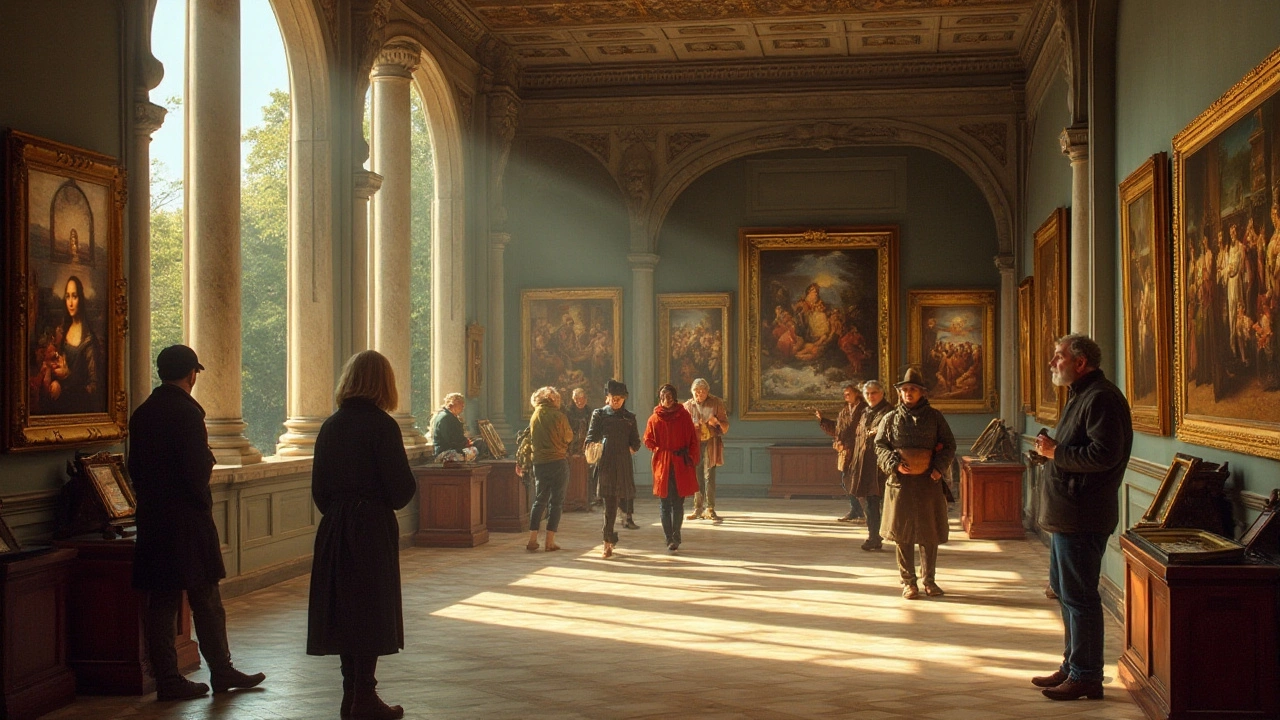
Techniques and Innovations
The Renaissance period revolutionized the art world with an array of innovative techniques and methods. During this era, artists like Leonardo da Vinci and Michelangelo began to explore new ways to depict depth, light, and perspective, laying the groundwork for modern art. One of the most groundbreaking techniques was linear perspective, which created the illusion of depth and three-dimensionality on a flat surface. Pioneered by Brunelleschi and perfected by artists like Raphael, this technique allowed scenes to appear more realistic and dynamic.
Another significant innovation was the use of oil paint, which replaced the older tempera paints. Oil paints offered artists greater flexibility, richer colors, and longer drying times, enabling more detailed, textured, and layered compositions. This opened the door for artists like Jan van Eyck to create astonishingly realistic and intricate works. Techniques such as sfumato and chiaroscuro, developed by Leonardo da Vinci, also became essential. Sfumato involved blending colors and tones seamlessly, without harsh lines or borders, to achieve a soft, smoky effect. Chiaroscuro, on the other hand, played with strong contrasts between light and dark, adding dramatic tension and depth to the composition.
Fresco painting saw a resurgence during the Renaissance. This method involved applying water-based pigments on freshly laid wet plaster, allowing the paint to become an integral part of the wall surface. Michelangelo's Sistine Chapel ceiling is a stunning example of this technique, demonstrating his masterful control of human anatomy and composition.
The concept of humanism also influenced Renaissance art. Artists began focusing more on the human experience, emotions, and individuality. This shift is evident in the detailed and expressive faces in the works of Botticelli and Titian. The human body, depicted with accurate anatomical proportions and lifelike poses, became a central theme, reflecting the era's fascination with classical antiquity and the study of human nature. As sculptors, painters, and architects experimented with these new techniques, they created a diverse and rich art landscape that continues to inspire and captivate audiences today.
Another fascinating aspect of Renaissance art was the integration of science and art, epitomized by figures like Leonardo da Vinci. His detailed sketches of human anatomy, engineering designs, and natural phenomena highlight the era's interdisciplinary approach to knowledge and creativity. By blending art with science, Renaissance artists were able to achieve a level of precision and realism that was unprecedented. This fusion of disciplines not only enhanced the quality of the art but also contributed to the advancement of scientific understanding.
The methods and innovations of the Renaissance were not confined to painting alone. Architecture also underwent a renaissance (pun intended) of its own, with architects like Brunelleschi and Alberti incorporating principles of symmetry, proportion, and geometry into their designs. The use of columns, domes, and arches, inspired by ancient Roman and Greek architecture, became prominent features in buildings such as the Florence Cathedral and St. Peter's Basilica.
"Without having seen the Sistine Chapel one can form no appreciable idea of what one man is capable of achieving." - Johann Wolfgang von Goethe
This quote by Goethe captures the essence of the astounding achievements of Renaissance artists. Their innovations laid the foundation for centuries of artistic expression and continue to be revered and studied in today's artistic and academic communities.
In conclusion, the techniques and innovations developed during the Renaissance were pivotal in transforming the art world. From the development of linear perspective and oil paints to the revival of fresco painting and the integration of humanism and science, these advancements allowed artists to push the boundaries of creativity and realism. This period of artistic exploration and discovery has left an indelible mark on the history of art, and its influence can still be seen in contemporary works today.
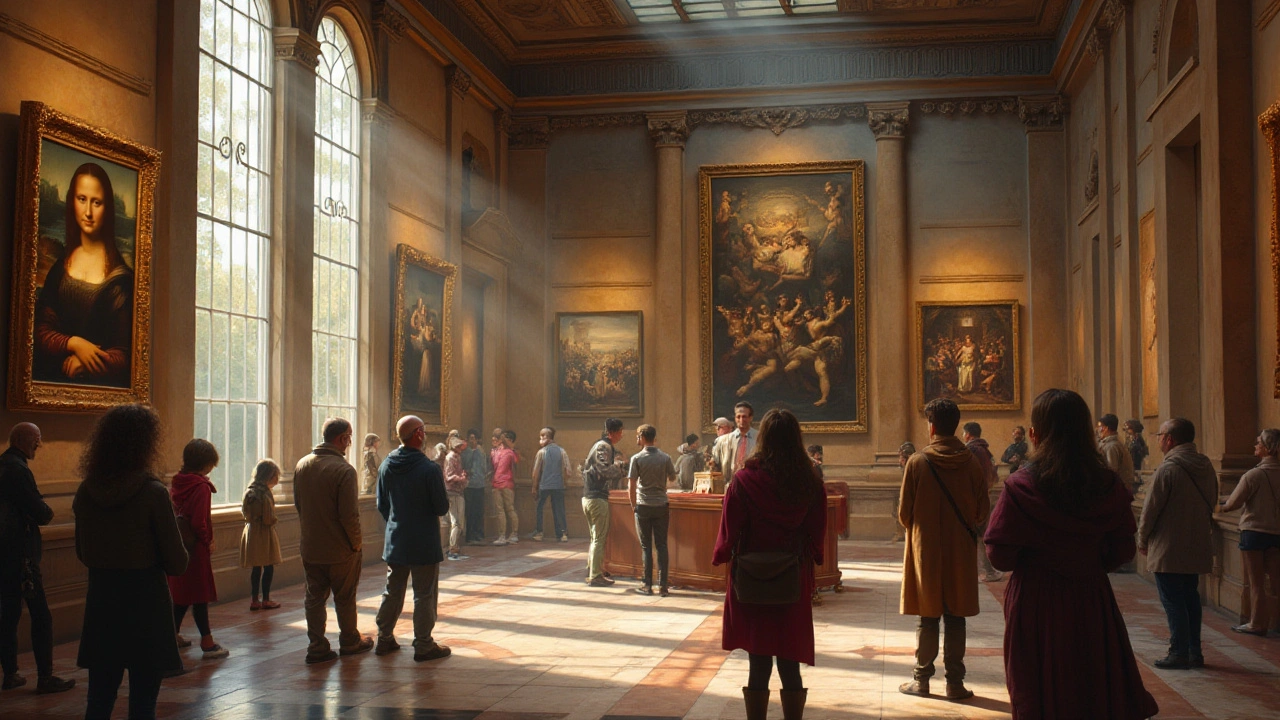
Cultural Impact and Modern Relevance
The legacy of the Renaissance continues to shape our world in a multitude of ways. One cannot stroll through the Uffizi Gallery in Florence or gaze upon the Sistine Chapel's ceiling without feeling the profound influence of this transformative period. The Renaissance redefined art, placing emphasis on realism, human emotion, and individualism, elements that persist in today’s artistic endeavors.
Modern art owes a debt to the Renaissance for advancing techniques like perspective, chiaroscuro, and anatomical accuracy. These innovations broke the conventions of medieval art, giving rise to a more balanced and true-to-life representation. This wasn’t just confined to paintings and sculptures; even architecture reflected these new ideals, with structures like St. Peter's Basilica drawing inspiration from classical antiquity while embodying Renaissance ingenuity. The seeds of these advancements continue to bloom in contemporary design and visual arts.
The cultural shifts of the Renaissance also laid the groundwork for the modern intellectual and scientific revolutions. This era revived classical knowledge and fostered curiosity that transcended borders and disciplines. The Renaissance believed in the potential of human achievement and celebrated artists and thinkers. This spirit led to breakthroughs not just in art but in science, exploration, and literature. Figures like Leonardo da Vinci exemplified this, with his dual talents in art and science. Galileo's astronomical discoveries were equally influenced by the period’s spirit of inquiry.
Interestingly, the Renaissance marked the beginning of art as a form of social commentary. Artists were no longer merely creating aesthetically pleasing works for religious or aristocratic patrons; they also began to explore themes of humanism and personal identity. This paved the way for future movements where art would continue as a tool for reflection on societal issues. The Renaissance's humanist principles are echoed in today's focus on individual rights and freedoms. Modern artists often draw parallels between their work and the Renaissance, aspiring to capture the same spirit of innovation and social engagement.
Our fascination with Renaissance art is evident in modern media and popular culture. Movies, documentaries, and books frequently reference the masterpieces and the artists behind them. The mysterious smile of Leonardo's Mona Lisa, for instance, continues to intrigue and inspire countless works of fiction and scholarly debate. Art history courses worldwide devote significant time to studying the Renaissance because understanding this era helps contextualize the evolution of Western art and thought.
"The Renaissance is the foundation of modern Western culture. Its spirit of inquiry and discovery laid the groundwork for the advances that continue to shape our lives today." – Kenneth Clark, noted art historian.
Even in the realm of technology, the Renaissance’s impact is felt. Consider virtual reality and 3D modeling software, which owe much to the perspective techniques first developed during this period. Architects and designers use these advanced tools to create everything from videogame environments to real-world buildings, blending utility with artistic expression. By embracing the approaches of Renaissance masters, modern creators find new ways to innovate and inspire. The Renaissance cultivated an ethos of curiosity, creativity, and excellence that remains relevant, encouraging today's artists and thinkers to push boundaries and explore new horizons.

